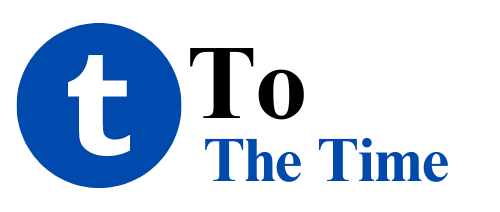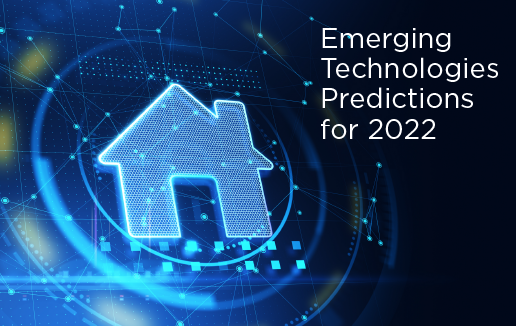The emerging blockchain technology has several applications. It is used to process digital transactions. It is used in the production of cryptocurrencies, including Bitcoin. This technology allows multiple authorities to control pre-selected nodes that can validate blocks and process transactions. Blockchain technology is what makes cryptocurrency possible. Bitcoin is one of the most popular cryptocurrencies, and runs on its own blockchain platform. However, many of these cryptocurrencies are currently subject to price volatility. However, some of them are stable, and are expected to reach an all-time high by 2019-20.
BaaS
Blockchain as a Service (BaaS) is a type of cloud computing model that makes the use of blockchain technology more accessible to the masses. This technology allows businesses to outsource the technical work and focus on their core activities, while the BaaS provider manages and maintains their blockchain services.
BaaS offers a new way for businesses to access blockchain technology, and is a great way to expand your business’s scope. However, BaaS is still a relatively new technology, so it is a good idea to do a return on investment calculation for your business before you begin using it.
The growth of BaaS is anticipated to increase during the next three to five years. As more corporations become interested in blockchain, BaaS will help them adopt it. With BaaS, corporations can “outsource” the technically complex work, allowing them to focus on their core business. In fact, some of the biggest technology companies are already making inroads into this market. For example, Microsoft is supporting BaaS on its Azure platform and is developing its own blockchain-based service. Oracle and Amazon have both provided cloud-hosting services to BaaS.
BaaS is similar to SaaS, but uses a cloud-based platform for building applications and running blockchain-based applications. This makes it possible for businesses of all sizes to adopt Blockchain technology. In addition to being more accessible, BaaS also provides a secure environment and lower costs for organizations.
In terms of applications, BaaS can be used in finance, supply chains, decentralized exchanges, and smart contracts. This type of technology is expected to increase productivity and efficiency, and is expected to help businesses reduce operational costs.
Extobit
Blockchain is a revolutionary technology which enables you to transfer money in a secure and decentralized way without the need of a third party. It offers many benefits, including greater security, transparency, and trust between its users. This technology can also reduce costs and time associated with transaction processing.
While traditional banking methods take days to settle, blockchain can eliminate this issue. A transaction placed through a central authority could take a few days to process, whereas one that occurs on a blockchain takes as little as 10 minutes. This means that even cross-border transactions can be completed in a matter of minutes. Blockchain is particularly useful for these transactions, which usually take longer because of time zone differences. The blockchain allows all parties involved to confirm a payment processing in real time.
Although blockchain is mostly used in the financial world, it can be used for a variety of non-financial purposes as well. For example, it can be used in supply chains to create a more transparent structure, as well as to document real estate title transfers. But most blockchain efforts are still in the pilot stage, and most of these networks are not interoperable. In addition, organizations that would like to use blockchain face a range of legal and ethical concerns.
Cryptocurrencies
The use of virtual currencies, or crypto assets, is growing in many markets, including those with weak institutions and unstable national currencies. These new digital assets have also been used as an alternative currency. Many new cryptocurrency offerings have also been created, or ICOs, with the intention of raising money. In fact, initial coin offerings have already raised $3.4 billion this year. Bitcoin has grown from $910 in January 2017 to more than $17,000 as of December 2017.
Blockchain technology has made the concept of trust more believable. Previously, lawyers were required to bridge the trust gap between parties, which took a lot of time and money. Today, cryptocurrencies can be used in transactions without intermediaries, thus making them more trusted. In fact, Bitcoin has become a popular form of currency and has sparked serious exploration in the financial industry. Although Blockchain technology is still in its early stages, it is gaining more momentum.
The rapid development of Blockchain technology has also paved the way for new digital financial products. For example, in the financial industry, this technology has the potential to reduce costs while improving access to the financial system. The most notable application of this technology is cryptocurrency, which has a decentralized structure and cryptography that protects the information that is stored. However, many cryptocurrencies are volatile, so stablecoins are currently being developed to mitigate the volatility risks. Another application of blockchain is decentralized finance, which offers blockchain-based borrowing and lending. However, this type of financial technology has some drawbacks, including enabling illicit activity and reducing consumer protections.
Bitcoin is one of the biggest cryptocurrencies, but there are many others as well. Ethereum is the second-largest, with a market capitalization of $1.7 trillion. The three biggest cryptocurrencies are Ethereum, Tether, and Bitcoin. Bitcoin has the largest market share and dominates the market. Ethereum is a popular alternative to bitcoin and has several distinct advantages. Ethereum, for example, has a lower energy footprint than bitcoin. Its mining process and transactions require less electricity than bitcoin.
Social media
Social media has a long history of privacy issues, but a new decentralized technology called blockchain has the potential to solve these problems. This technology can make social media more secure and allow for the creation of smart contracts. It can also make user data more private and untraceable. With its decentralized nature, blockchain can ensure that a user’s data is kept private, and that it cannot be duplicated or accessed by third parties.
Traditional social media platforms rely on central databases to store user data. By contrast, decentralized social media networks rely on peer-to-peer networks comprised of thousands of nodes located around the world. The problem with traditional networks is that they have single points of failure and may go offline for hours at a time. The decentralized nature of decentralized networks allows networks to run uninterruptedly, without the risk of any single party controlling the data.
Social media has radically changed the way we communicate. Unfortunately, it has also created a problem with its inability to moderate content. People were able to spread false news on different social media platforms. The Centers for Disease Control and Prevention claims that this misinformation has significantly affected the conversation around COVID-19.
Blockchain technology is an emerging technology that can be applied to social media. Currently in its infancy, the first applications of blockchain technology are a decade away. Although blockchain has many benefits, the technology is not ready for widespread adoption. Blockchain social media platforms will need time to mature and be fully functional.
Healthcare
The use of Blockchain technology in the healthcare industry has many potential benefits. For instance, it offers a decentralised record of transactions that are easy to trace. Furthermore, it is transparent and accurate, thus saving valuable time and money. Further, it also reduces risk by preventing data leaks and malicious devices from gaining access to vital information. Its scope and versatility are exciting to say the least.
Blockchain-based systems like Chronicled and Curisium enable players in the healthcare industry to authenticate their identities, log contract details, and track the movement of goods and payments. Furthermore, they are beyond just supply chain management, enabling trading partners to collaborate digitally. Furthermore, blockchain-based systems can automate contract terms and safeguard patient privacy.
With its decentralised nature, blockchain technology allows doctors, nurses, and health providers to access the information they need at any time. Moreover, blockchains improve payment options and decentralise patient health records. As a result, the healthcare industry will become more efficient. While it is still in its early stages, Blockchain technology is expected to transform the medical industry in the future.
Blockchains also help keep data secure by eliminating the need for a central authority. The technology can also be used to allow for machine-to-machine transactions and micropayments. The adoption of 5G technology will further encourage innovation in the field. By 2022, it is expected to reach a wide range of users and will allow for faster data sharing.
Healthcare systems are grappling with data silos, which prevent an accurate view of a patient’s medical history. According to a study by Johns Hopkins University, poorly coordinated care is the third leading cause of death in the US. This results from errors and omissions in patient records.

